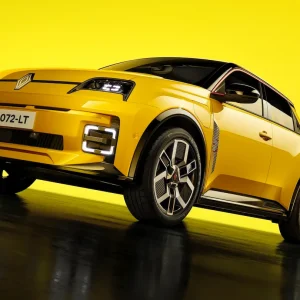When we tested the Skoda Kodiaq late last year, we awarded it that most rare and sought-after of accolades: a perfect 10/10 score. Indeed, Debbie Wood, BusinessCar’s esteemed editor, named it as her favourite new car of 2016. So there’s no pressure now it’s going head-to-head with its fiercest rivals then.
The brand has come on leaps and bounds recently and the Kodiaq is symbolic of that new-found confidence, aimed as it is at the booming mid-sized SUV class. It is, however, relatively rare in that it offers the option of seven seats – something that adds a welcome dose of extra practicality over some of its five-seat-only rivals like the Nissan Qashqai and the Peugeot 3008.
The Kodiaq is almost certain to become a big hit among both retail and fleet markets thanks to its combination of style, practicality, value for money and relatively low running costs.
Initially, there’s a choice of two petrol and two diesel engines, with rumours circulating that a plug-in hybrid version is on the way too, but it’s the 2wd 150hp 2.0-litre diesel that’s likely to tickle a fleet manager’s fancy.
Headline figures of 56.5mpg and 131g/km of CO2 put it at about average next to its rivals, while a 0-62mph time of just over 10 seconds is less than blistering. However, this engine is beautifully smooth and pulls strongly in the mid-range, making motorway cruises a doddle.
Combine this with the ever-impressive seven-speed DSG automatic gearbox (you can’t spec a manual), which shifts ratios quickly and incredibly smoothly, and you’ve got a winning combination. All versions with 150hp and above are available with four-wheel drive, but unless you’re planning some off-roading, we wouldn’t recommend it.
The extra weight of the system adds too much in terms of CO2 emissions and drops fuel efficiency to such a degree as to make any extra grip or security when it comes to handling not really worth it.
Moreover, a car such as this is not really designed for blistering performance or the sharpest of driving experiences and, especially in the latter discipline, this shows – not that this is a bad thing, of course. Comfort and ease of use are the watchwords here and it delivers these by the bucketload. Nor is it entirely useless in the corners either, suppressing body roll well and steering with great accuracy.
It’s inside where things have really been turned up a notch, however, putting it right up there with the more expensive cars in this grouping. Quality – both in terms of construction and materials used – are second to none, while all the controls are simple to operate and the touchscreen infotainment system is slick, stylish and easy to use.
There’s also plenty of room in the first two rows of seats, although the third row will always be a squeeze for anyone other than small children. The same could be said for all its rivals, however.
Most business users will go for SE Technology trim, which sits in the middle of a five-strong line-up, and you do get plenty of standard kit. These come with the likes of sat-nav, digital radio, a multi-function steering wheel, front and rear parking sensors, wi-fi connectivity, keyless entry and go, as well as 18-inch alloy wheels.
Getting down to the nitty-gritty of the Kodiaq’s whole-life costs and it still continues to shine. Costing just 53.8p per mile, it’s way ahead of any of its rivals, the closest being the Nissan X-Trail. A major contributor to this is the impressive residual value figure, which offsets its good, but not outstanding, fuel economy and CO2 emissions, while the reasonable P11D values help keep monthly costs down too.
Skoda Kodiaq SE Technology 2.0 TDI 150PS DSG – 53.8p |
| P11D: £27,780 |
| CO2 (tax): 131g/km (28%) |
| BIK 20/40% per month: £130/£259 |
| Fuel consumption: 56.5mpg |
| National Insurance: £3,489 |
| Boot space (5/7 seats): 720/270 litres |
| Engine size/power: 1,968cc/150hp |
| 0-62mph: 10.3 seconds |
Residual value: 51.3%/£14,250
Fuel costs: £5,773
SMR: £2,396
Nissan X-Trail – 62.1p

If the Kodiaq is the star all-rounder in this class, then it’s the X-Trail that leads the way when it comes to fuel economy and CO2 emissions. A combined average of 57.6mpg is the best among these four, while CO2 emissions of 129g/km mean it sits in the 27% BIK tax band, which is again the best among this group.
Even though it gives away 20hp compared to the Kodiaq and is the least powerful car we’re looking at here, its 0-62mph time is almost exactly the same as the Skoda, so you shouldn’t notice much difference when it comes to performance.
One area where it is let down, however, is in terms of residual values. After three years and 36,000 miles it keeps just 36% of its original value – by far and away the worst out of these four and a major contributor to why its cost per mile figure is so much more than the Kodiaq’s and close to the Kia and Land Rover’s. It’ll also cost a little bit more than the Skoda to insure, sitting in group 19, rather than the Skoda’s best-in-class group 17 rating.
Away from the hard facts and figures, the X-Trail just isn’t as nice a place in which to spend time as the Skoda, or the Land Rover for that matter, with both design and quality lacking. That being said, it’s well equipped and it rides perfectly comfortably, too and in terms of practicality, with its sliding second row of seats, it’s right up there with the Kodiaq, even if the Skoda does offer a fair bit more bootspace in extremis.
Nissan X-Trail 1.6dCi 130 Acenta Smart Vision Tech |
| P11D: £28,745 |
| CO2 (tax): 129g/km (27%) |
| BIK 20/40% per month: £129/£259 |
| Fuel consumption: 57.6mpg |
| National Insurance: £3,491 |
| Boot space (5/7 seats): 550/135 litres |
| Engine size/power: 1,598cc/130hp |
| 0-62mph: 10.5 seconds |
Residual value: 36.1%/£10,375
Fuel costs: £5,663
SMR: 2,384
Kia Sorento – 69.7p

You could argue that the Kia Sorento is in the class above the other cars in this list, but it manages to straddle the gap between these medium-sized family SUVs and those of the larger persuasion, like the Audi Q7, VW Touareg and Land Rover Discovery.
Well-equipped, spacious and comfortable, the Sorento ticks an awful lot of boxes, especially if getting the maximum amount of car for the money is your top priority. Add to that the fact that it’s both the most powerful and the fastest of this quartet and it starts to look very appealing. However, power, speed and size do have their drawbacks. The Sorento is significantly heavier than any other car here and, consequently, it’s the thirstiest and dirtiest too.
On the combined cycle it’ll only return around 46.3mpg, while CO2 emissions of 159g/km put it in the 33% BIK bracket. All these things added up together mean it’s by far and away the most expensive car out of these four when it comes to monthly outgoings, in terms of both employer and employee costs, including things like insurance.
You may, however, be pleasantly surprised by the interior quality offered by the Sorento. Okay, so it’s not quite up to the same standard as the likes of Volkswagen, Audi, BMW or Mercedes, but it’s certainly up there with the best in this group and a big step up from Kias of old. It’s certainly not the cheap ‘n’ cheerful budget option it once was.
Kia Sorento 2.2 CRDi KX-2 |
| P11D: £31,760 |
| CO2 (tax): 159g/km (33%) |
| BIK 20/40% per month: £175/£349 |
| Fuel consumption: 46.3mpg |
| National Insurance: £4,602 |
| Boot space (5/7 seats): 660/142 litres |
| Engine size/power: 2,199cc/197hp |
| 0-62mph: 9.7 seconds |
Residual value: 40.1%/£12,750
Fuel costs: £7,045
SMR: £2,337
Land Rover Discovery Sport – 64.3p

If you need a car that’ll seat seven, not cost the earth to run and do some serious off-roading, then you’ll need the Land Rover Discovery Sport. In fact, if you need a car that’s better off-road then you’ll probably need another Land Rover. Unlike the other three here, which are all two-wheel drive, you can only have the Discovery Sport with four-wheel drive.
Obviously, the Discovery Sport occupies a slightly more premium sector than the others in this grouping and, as a result, we can only compare the Kodiaq with an entry-level SE model, which isn’t quite as lavishly equipped as other versions. However, you still get dual-zone climate control, partial leather upholstery, heated front seats, parking sensors, and a touchscreen infotainment system with Bluetooth connectivity and DAB radio. It’s a shame there’s no standard sat-nav, however.
Despite being an entry model, it’s still the priciest of these four, with a P11D just shy of £1,000 more than the Kia. It is, though, much cleaner and more efficient than the Kia. Figures of 53.3mpg and 139g/km are not to be sniffed at, especially when you consider the standard-fit four-wheel drive system, plus it’s nearly as quick as the Kia.
The fact that its residual values are nearly as good as the Skoda’s help offset a high P11D and it should save cash in terms of fuel too. It starts to struggle in other areas, though, costing the most in terms of insurance and SMR.
Land Rover Discovery Sport 2.0 TD4 180 SE |
| P11D: £32,610 |
| CO2 (tax): 139g/km (29%) |
| BIK 20/40% per month: £158/£315 |
| Fuel consumption: 53.3mpg |
| National Insurance: £4,230 |
| Boot space (5/7 seats): 689/194 litres |
| Engine size/power: 1,999cc/180hp |
| 0-62mph: 9.9 seconds |
Residual value: 49.0%/£15,975
Fuel costs: £6,120
SMR: £2,774
Related articles:
Cost analysis – Vauxhall Astra
Whole-life costs: The hard sell





